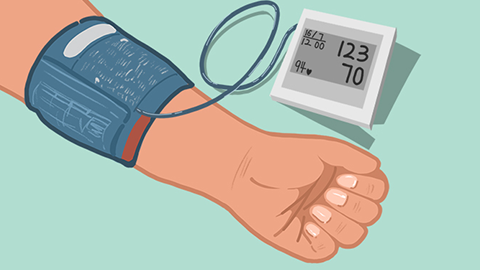What is the principle of indirect blood pressure measurement?
Indirect blood pressure measurement involves inflating a cuff around the arm to compress the artery and block blood flow, then slowly deflating it. The systolic and diastolic pressures are estimated indirectly based on changes in arterial pulsations as blood flow returns, without the need for direct vascular puncture. If repeated blood pressure measurements are abnormal or accompanied by dizziness or headache, prompt medical consultation is recommended.

During measurement, the cuff is wrapped around the upper arm and inflated. When the pressure in the cuff exceeds the systolic arterial pressure, blood flow in the artery is completely blocked, and no arterial pulsation sounds can be heard with a stethoscope. As the cuff is slowly deflated, when the pressure drops to equal the systolic pressure, blood flow begins to resume, and the first audible pulsation sound is heard through the stethoscope—this pressure corresponds to the systolic pressure.
Deflation continues and the cuff pressure gradually decreases. When the pressure falls below the diastolic pressure, blood flow through the artery becomes fully unobstructed, and the pulsation sounds heard via the stethoscope disappear—this pressure corresponds to the diastolic pressure. In this way, the pressure exerted by blood on the arterial walls can be indirectly determined. This method is a safe, convenient, and widely used approach in both clinical and home settings.
Before routine blood pressure measurement, rest quietly for 5–10 minutes. The cuff should be snug but allow one finger to fit beneath it. Maintain proper posture during measurement, regularly calibrate the sphygmomanometer, and record measurement results to effectively monitor your blood pressure over time.




